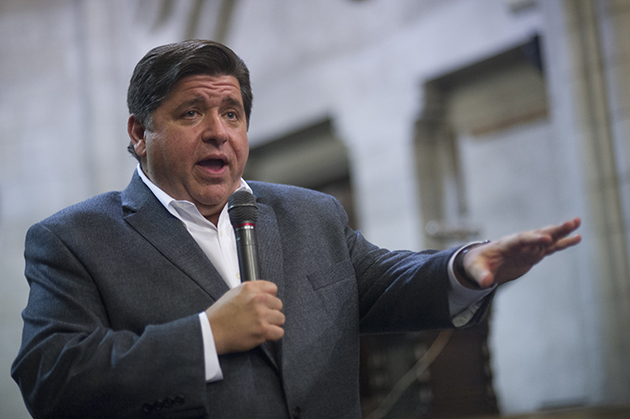Over the past decade, state renewable portfolio standards (RPSs) have been a leading policy driver for renewable energy growth across the country, and the 2018 midterms saw the elections of several governors who have pledged to work to double or even quadruple their state’s renewable energy targets.
Of course, successful legislation requires the support of both the state legislature and the governor. But support from the governor’s mansion is still incredibly valuable, even as a backstop veto for policies that could unweave renewable energy’s strong growth in key state markets, or in the appointment of public service commission members. In the past two legislative sessions, state legislatures in Maine, New Mexico, and Nevada passed renewable energy initiatives that had bipartisan support, but were later vetoed by governors. As we have seen in Illinois, Ohio, and Michigan, Republican governors can be strong champions for clean, renewable energy and the local job growth that the industry propels. However, in several of the below states (IL, CO, MI, NM, NV, ME, WI), Democrats control both houses of the state legislature, which could ease the passage of some pro-growth renewable power policies.
Here’s a roundup of the most potentially impactful gubernatorial wins for renewable energy:
-
- Colorado: Governor-elect Jared Polis has called for 100% renewable energy for the state by 2040, as well as the expansion of distributed energy resources like solar. The state currently has a 30% RPS by 2020 for investor-owned utilities.
- Maine: Governor-elect Janet Mills has called for 100% clean energy by 2050, as well as expanded distributed generation. Maine currently has a 10% RPS for class I renewables, but only 42MW of solar deployed, ranking #43 nationally in solar deployment and #26 nationally in solar jobs per capita.
- Connecticut: Governor-elect Ned Lamont supports 100% clean energy for the state by 2050, while the state now has a 48% by 2030 RPS goal, which was passed in 2018. In the meantime, the state is currently working on its Comprehensive Energy Strategy, the final draft of which received criticism for not focusing strongly enough on new solar generation.
- Oregon: Re-elected Governor Kate Brown supports 100% clean energy by 2050. Oregon's RPS now requires that 50% of electricity comes from renewable energy sources by 2040. However, hydro power makes up a vast majority of the renewable generation in the state, and expansion of the state’s RPS will not guarantee a large growth in solar.
- New Mexico: Governor-elect Michelle Lujan has called for 80% renewable energy for the state by 2040, which would be a significant leap from the state’s current RPS goals -- 20% by 2020 for investor-owned utilities and just 10% for electric cooperatives. Despite high solar irradiation, the state has only deployed 752MW of solar to date, ranking #16 nationally.
- Illinois: Governor-elect J.B. Pritzker aims to double the state’s 25% by 2025 RPS to 50% by 2025, and then again to 100% by 2050. This is significant, as Illinois passed the Future Energy Jobs Act (FEJA) in 2016 which will dramatically increase solar and wind in the state. Solar advocates expect the state to quickly meet the goals set forth in FEJA and welcome leadership from the Governor-elect to expand the state’s target of 666MW of distributed and community solar.
- Nevada: Governor-elect Steve Sisolak supported Nevada’s successful 2018 ballot initiative that mandates 50% renewables by 2050, although this seems modest when considering the state’s existing 25% by 2025 RPS.
- Minnesota: Governor-elect Tim Walz supports a 50% renewable energy goal for the state by 2030. Current mandated renewable energy targets vary by utility, up to 31.5% by 2020.
- Wisconsin: Governor-elect Tony Evers has come out in support of a 100% by 2050 clean energy target for the state -- a vast expansion from the state’s outdated, modest 10% by 2015 goal. Wisconsin has been a laggard in renewable energy deployment with only 56MW in solar and #27 in solar jobs per capita. Will this change under new leadership in Madison?
- Michigan: Governor-elect Gretchen Whitmer supports 100% renewable energy by 2050. The state now has a 15% by 2021 RPS (passed under Republican Governor Snyder in 2016), though Whitmer co-sponsored state legislation in 2015 that aimed for a stronger goal.
Despite the addition of these new renewable energy champions at the state level, the midterms also offered key losses for the industry. A trio of renewable energy and climate ballot measures failed in Arizona (an RPS increase), Washington (putting a price on carbon), and Nevada (establishing competitive electric utility markets).
The solar industry also lost a handful of key advocates due to term limits. One such loss was Ohio Governor John Kasich (R), who repeatedly protected the state’s meager RPS from attack due to this understanding of the renewable energy job opportunity for Ohioans, and that technology companies prefer to site data centers in states with strong renewable energy goals. He will be succeeded by Governor-elect Mike DeWine, whose positions on climate and clean energy are less clear.
This is an excerpt from the November 2018 edition of The SOL SOURCE, a monthly electronic newsletter analyzing the latest trends in renewable energy based on our unique position in the solar industry. To receive future editions of the journal, please subscribe.
ABOUT SOL SYSTEMS
Sol Systems, a national solar finance and development firm, delivers sophisticated, customized services for institutional, corporate, and municipal customers. Sol is employee-owned, and has been profitable since inception in 2008. Sol is backed by Sempra Energy, a $25+ billion energy company.Over the last ten years, Sol Systems has delivered 800 MW of solar projects for Fortune 100 companies, municipalities, universities, churches, and small businesses. Sol now manages over $650 million in solar energy assets for utilities, banks, and Fortune 500 companies.Inc. 5000 recognized Sol Systems in its annual list of the nation’s fastest-growing private companies for four consecutive years. For more information, please visit www.solsystems.com.



